Science
Frogs and Toads Together: Why do Amphibians Group Up?April 11, 2025

2
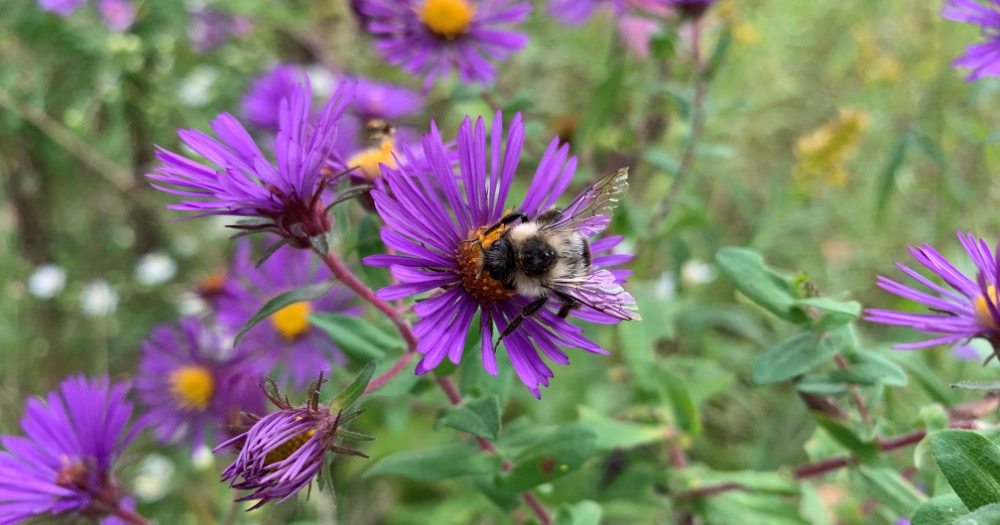
Pollination for plants can seem like a challenging concept to teach in elementary school, but it can be a blast if you embrace it! With the help of Rita Gray’s Flowers Are Calling and experiential learning, your students will be pollination pros in no time. This article is here to guide you through background information about pollination, why it’s important, different types of pollination, and ideas on how to teach it to elementary students.
Affiliate disclosure: As an Amazon Associate, I may earn commissions from qualifying purchases from Amazon.com. This is at no extra cost to you. If you’d like to learn more, check out my disclaimers page.
Don’t need all the info? Use this list to jump to the stuff you need:
Flowers Are Calling by Rita Gray
Each grade level in elementary school is responsible for learning about plants. If your state uses the Next Generation Science Standards, the break-down of plant-related standards looks something like this:
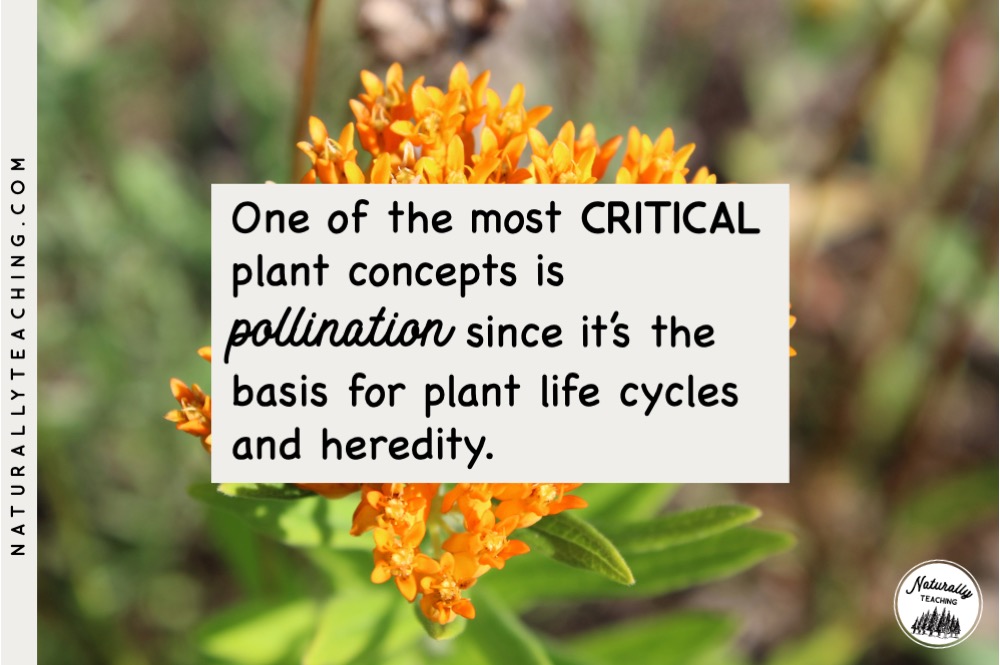
As children move through their elementary years their understanding of plants, their life cycles, their importance to the food chain and more are developed through experience and knowledge gaining activities. One of the most critical of these concepts is pollination since it is the basis for plant life cycles, heredity, and potential role in the food web. Let’s dive into the background of pollination and then learn some ways to teach pollination for plants in your elementary classroom.
A child-friendly definition of a flower is the part of the plant that blossoms and produces seeds. The scientific function of a flower is to produce seeds by sexual reproduction of male and female gametes. In order for pollination to be completed, the pollen from the male part of a flower needs to reach the female part of a new flower.
Flowers have many parts to aid in this endeavor (which we’ve all probably labeled at some point in our education journey). There’s the sepal, which is the cover that protects the flower as it emerges. The oh-so familiar petals, the colorful protrusions used to attract pollinators. There’s the stamens, the male reproductive organ made up of the filament and the anther. And there’s also the carpel, aka the pistil, which is the female reproductive organ made up of the stigma, the style, and the ovary. These parts, plus a few others, work together to aid in the function of a flower, which is to make seeds for the plant.
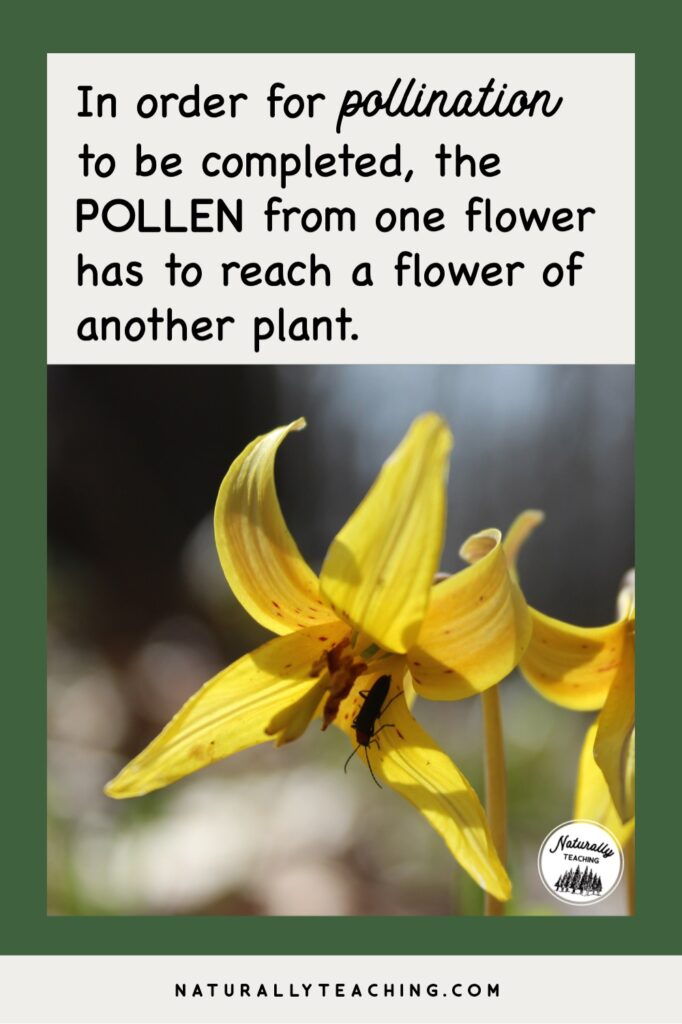
But first off, why is pollination important? We hear about the decline of pollinators and how we should be helping their populations, but again, why is pollination important? Without pollination, plants would be unable to reproduce meaning the collapse of most ecosystems.
As 5th graders learn through the Next Generation Science Standards, each food chain begins with the sun and then plants harness that energy and produce their own food through photosynthesis. The harnessed sun energy can then be transferred to animals that eat part of the plant or eat an animal that has eaten the plant. Without plants, there would be no energy on Earth for organisms to survive off of (with a few exceptions of course).
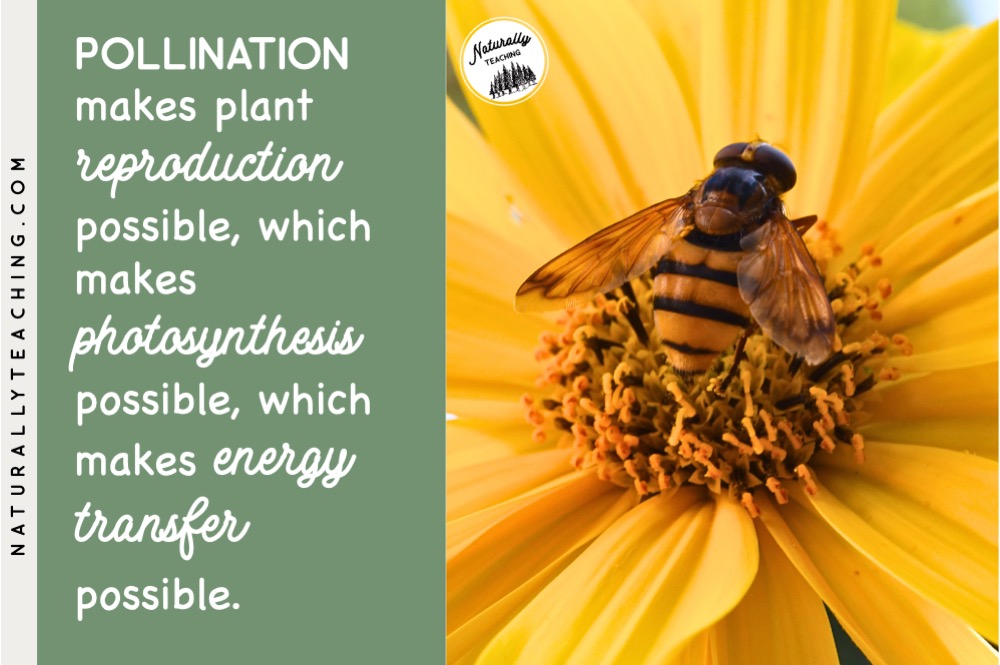
Pollination makes plant reproduction possible. Plants reproducing makes photosynthesis possible. Photosynthesis harnesses the energy of the sun and makes it transferable to other organisms, supporting the health and biodiversity of ecosystems. Yay plants!
A child friendly pollination definition would be when pollen somehow moves from one plant to another of the same type. The scientific pollination definition would be when pollen grains are transferred from the male anther of a flower to the female stigma of another flower of the same species.
So how does pollination of a flower actually work then? Remember those plant parts we covered at the beginning? Pollination for plants is simply the movement of pollen from the male part of the flower, the anthers, to the female part of a different flower of the same species, the stigma.
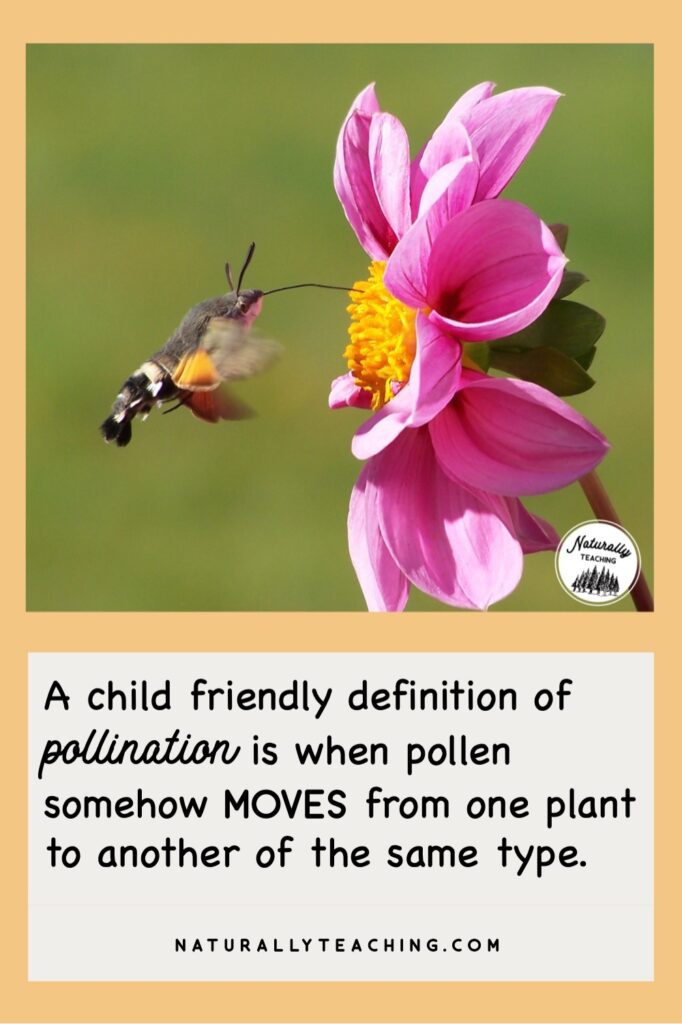
There are two different pollination types – cross-pollination, when the plant gets help from the outside world to pollinate it, and self-pollination, when the plant pollinates itself. Some examples of cross-pollination include pollination by animals, pollination by wind, and pollination by water. Plants have evolved over time to harness one or more of these techniques to ensure their flowers get pollinated.
The most commonly thought of pollination type is pollination by animals; this also happens to be the type that is taught in most schools. Pollination by animals is in fact one of the more common pollination types used by plants and can be explored with great joy with students.
Many people think of insects as being pollinators, and it’s true that they make up a large proportion of the pollinators in our ecosystems. Bees and butterflies are famous for being pollinators but beetles, flies, hummingbirds, moths, and bats are on the list as well.
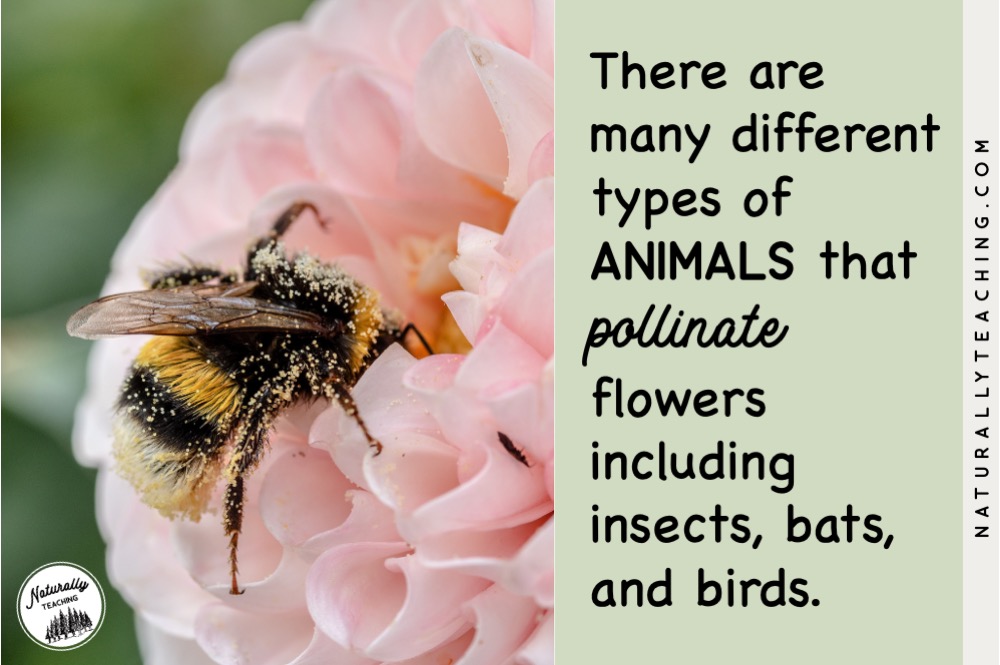
It’s important to note that these animals do not go to flowers with the intention of pollinating them. They didn’t wake up and decide that they were going to be pollinators that day. Instead, the flowers give them something of value to entice them over for a visit. Once there, the pollen on the anthers gets rubbed onto the fuzzy bodies or feathers of the animal and ends up rubbing off onto the stigma of another flower that they visit later.
Some plants use the technique of pollination by wind. The plants that use this technique rely on the blowing wind to move their pollen from their male parts to the female parts of another plant of the same species. If the plant that is pollinated by wind uses flowers, they are often not brightly colored, do not have odor or nectar, and are likely small.
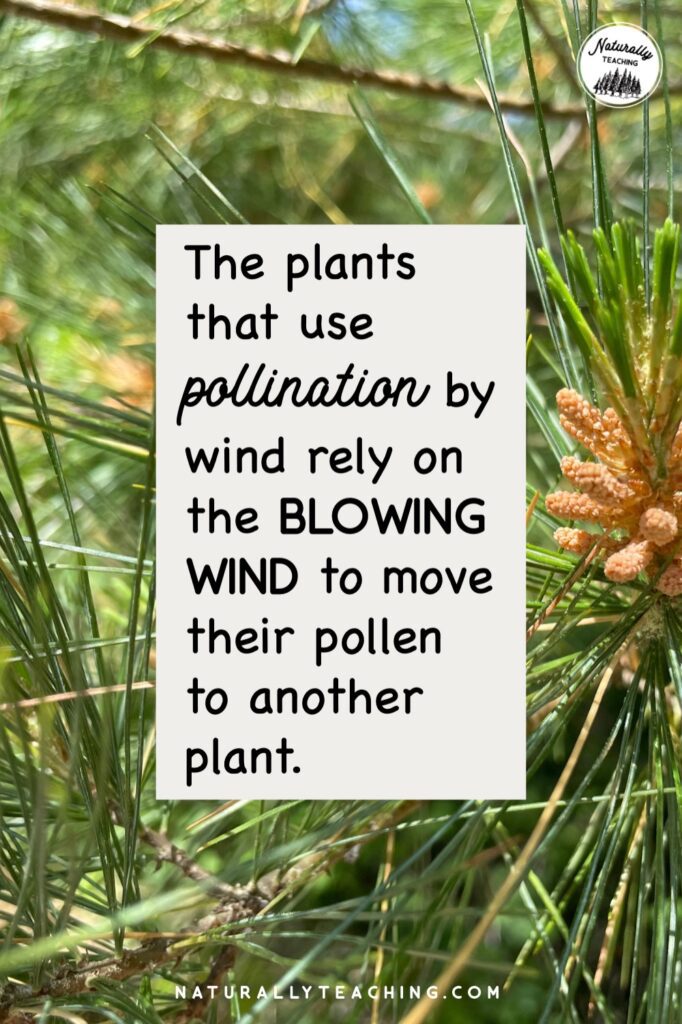
Some plants use the technique of pollination by water. Very few plants use this technique and when they do, they tend to be aquatic plants. Not all aquatic plants are pollinated by water though; some have flowers that reach the surface of the water and attract insects to pollinate them. When a plant is pollinated by water, it usually releases its pollen onto the surface of the water where it floats until it reaches another flower and pollinates it.
Some examples of animals that pollinate plants include:
Some examples of plants that pollinate using wind include:
Some examples of plants that pollinate by water include:
Some examples of self-pollinating plants include:
So, how can the book Flowers Are Calling by Rita Gray help you teach pollination? This book is an amazing introduction to how flowers “talk” to pollinators in order to attract them for pollination. Written in rhyme and predictable verse, Rita Gray uses humor to teach your students pollinators and the flowers they pollinate.
The structure of the story is repeated as Gray introduces three different pollinators and the habitats they may find flowers. Then she shares the names of the flowers and how they “call” the pollinators to them. This pattern continues for three sets and then she provides background information about five different techniques that flowers use to “talk” to animals.
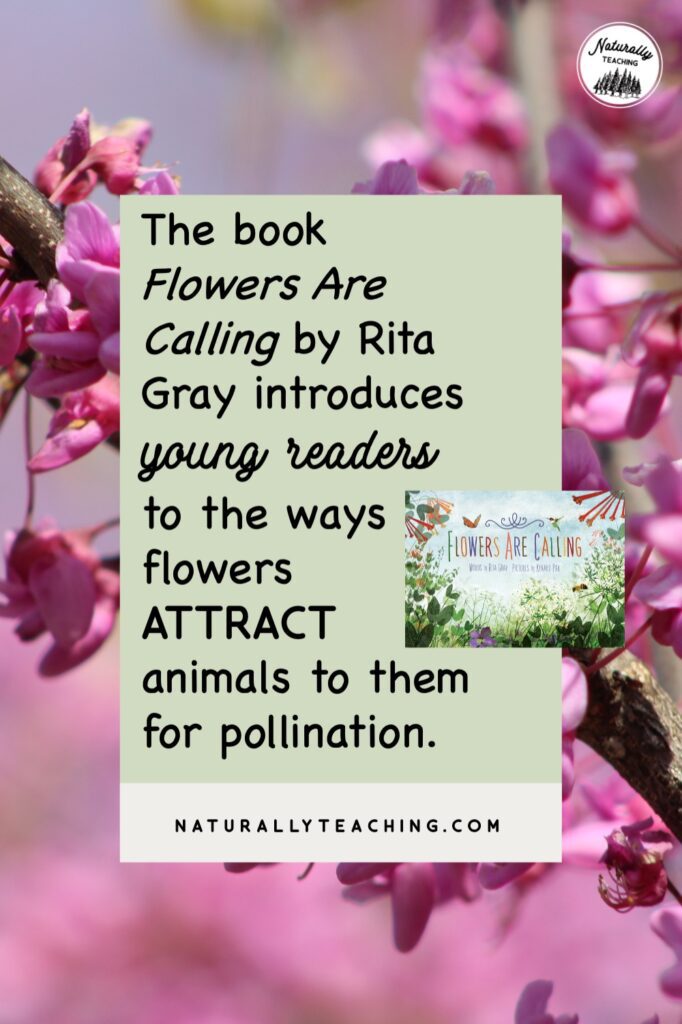
Examples of pollinators featured in the book include a butterfly, a bumblebee, a hummingbird, a honeybee, a beetle, a bee fly, a pollen wasp, a moth, a nectar bat. Examples of specialized flowers include Queen Anne’s Lace, Monkshood, Trumpet Honeysuckle, Apple tree blossom, Magnolia, Violet, Blowout Beard Tongue, Cardon cactus, and Moonflower.
The five attraction techniques Gray describes at the back of the book include the color of the flower, the pattern on the petals, the shape of the flower, the smell of the flower, and the time of day that the flower opens. By introducing these attraction techniques with a picture book, your students are getting words and pictures together to explain the phenomenon, creating memories that will help with recall later.
Teaching pollination doesn’t have to be intimidating. Through my years of teaching about pollination for plants, I have found that giving your students experiences or opportunities to role play are the best way for them to understand this abstract concept. So let’s break it down by the five attraction techniques that Rita Gray describes in Flowers Are Calling.
This is the easiest technique to introduce to your students since this is what attracts them to flowers. To give them an experience, you could go for a rainbow hike looking for flowers that are the different colors of the rainbow. If your students are young enough that they need some help with this, you could print off rainbow strips that could be carried around and used to compare to the flowers they are finding.
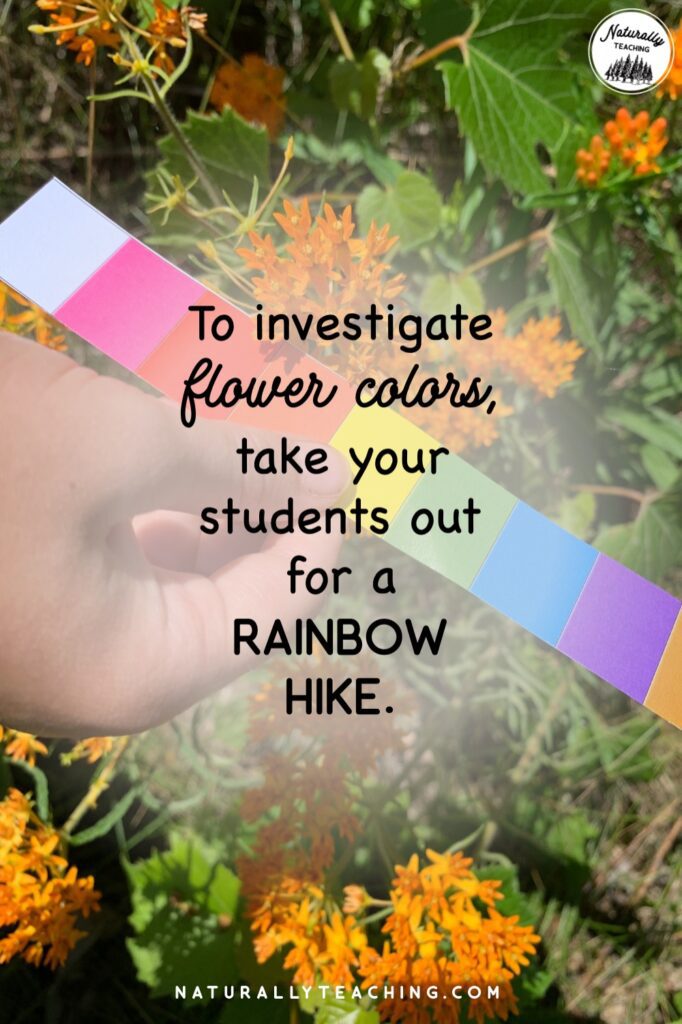
Some flowers have patterns on their petals that help guide pollinators to the nectar that they are looking for. They are sometimes called nectar guides or runways. This is another easy attraction technique that your students will likely connect with since it’s a visual clue.
Give your students the opportunity to build flower obstacle courses for each other using visual clues to get their partner from the “outside” of the flower to the “nectar source” in the middle. This could be as easy as providing them with ropes, yarn, hula hoops, recyclables, sidewalk chalk, and loose parts from nature. This fun and engaging activity will have them thinking critically about how to guide their partner from start to finish and will help them work on gross motor skills as well.
Some flowers use shape to attract pollinators to them. This attraction technique is a little harder to grasp since “shape” can mean a lot of different things. Sometimes shape can refer to how skinny and deep a flower is, how flat and landing-pad-like the flower is, or how strong the flower is.
Give your students a chance to experiment with different “animal mouths” to see what sort of mouth shapes could retrieve nectar from different flower shapes. Grab common household items that resemble flower shapes like skinny vases for trumpet flowers, shallow dishes for Queen Anne’s Lace flowers, bowls for Buttercup flowers, and brushes for thistle flowers. Then gather household items that would resemble different animal mouths like pipettes for hummingbird beaks, turkey basters for butterflies and bee proboscises, sponges for fly labellas and proboscises, pliers for beetle mandibles, and straws for nectar bats.
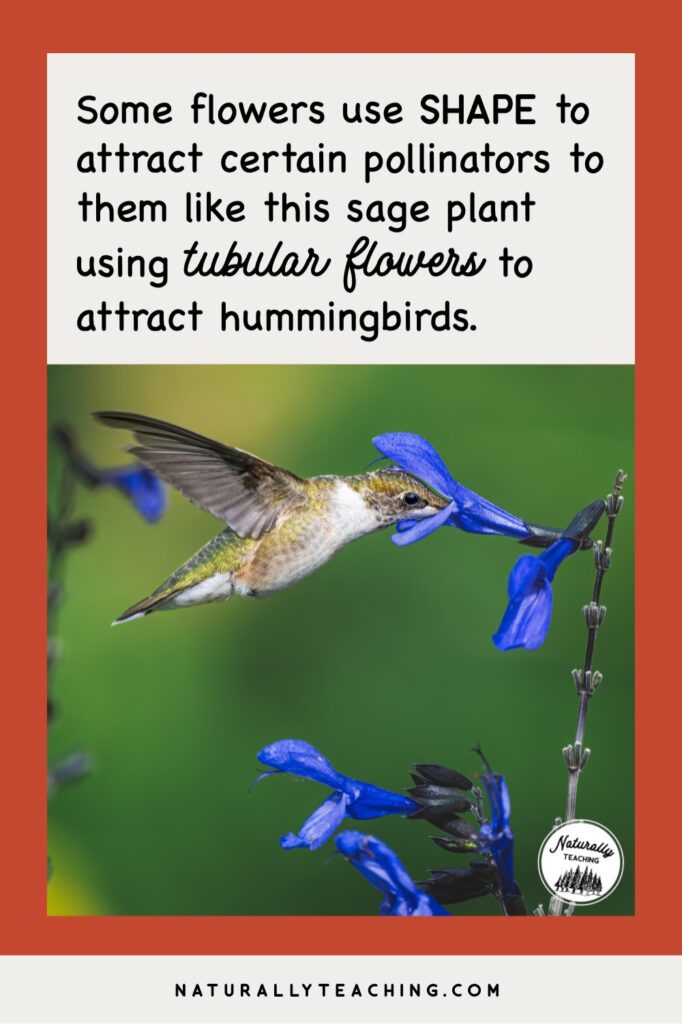
After gathering multiple sets of these materials, place a set of “flower shapes” and “animal mouths” in front of each of your groups and have them experiment to see which flower shape would attract which animal mouth. This would also work well as a center.
This is one of the more challenging attraction techniques for your students to grasp since many flowers don’t actually smell good to people. Your students may wonder what that flower was thinking when it developed that smell over the years! However, smell is an important and widely used attraction technique for flowers.
To give your students an opportunity to experience the draw of smells, provide them an experience that includes nice smells to attract them to different parts of your school yard. Buy a few packs of strong smelling Kool-aid and prepare the powder with just enough liquid that it dissolves. Use opaque, or non-see-through, containers with holes poked into the top to hold your Kool-aid.
Prepare two containers with the best smell that you have and one container for each of the other smells that you purchased (I would suggest having at least five different scents). Then go outside and put your containers at five different distinct areas, holding onto one of the duplicate containers. For the scent that you decided was the best, hide a prize with the container such as a sticker or a fun craft project as a reward for finding the correct scent.
After you’re prepped, bring your students outside and share the directions. Tell them that they are going to smell the container in your hand and try to remember what the smell smells like; this is the type of smell their pollinator is attracted to. Their job is to run around the schoolyard and find other containers that have a smell, smell them, and decide if it’s the smell that their species likes. When they find the right smell, there will be a container with a small prize inside.
This is probably the trickiest of the attraction techniques for students to understand. Since most of your students are awake during the day and not at night, they likely have not seen flowers that are open during the nighttime. It’s also hard to give them this experience since most schools meet during the day.
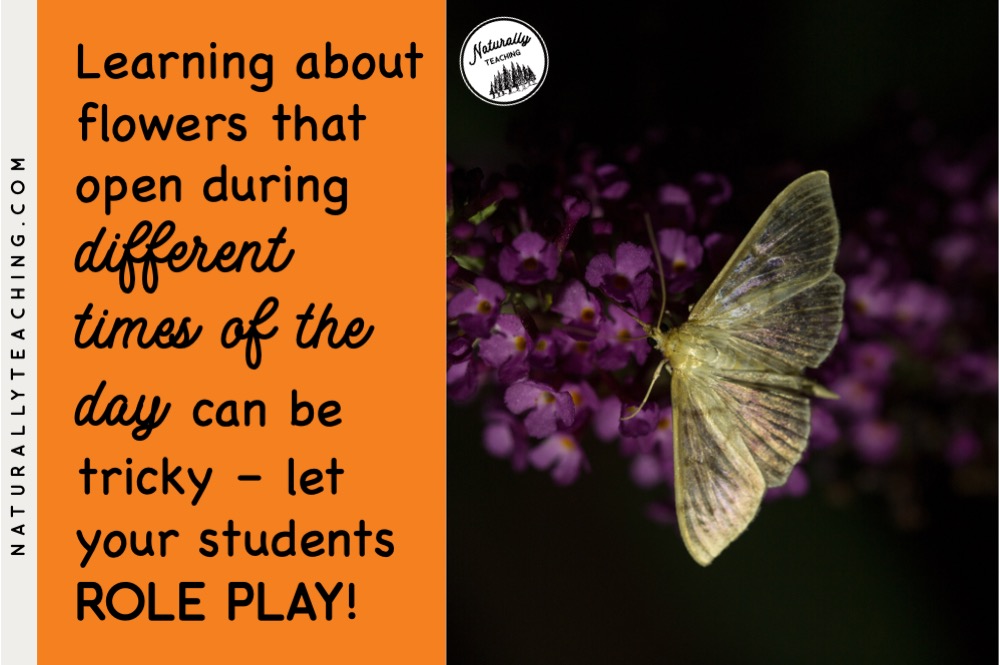
Provide your students an opportunity to role play for this attraction technique. Either have your students make flowers or provide them with fake flowers and then have a discussion about which flowers may be open during the day versus the nighttime. A lot of the time, night blooming flowers are lightly colored like white, yellow, or pink; this helps the light from the moon and stars to bounce off the petals more easily making them easier to find in the dark. They also tend to have strong smells. Separate your classroom flowers to be “day bloomers” and “night bloomers”. Allow your students to pick which sort of pollinator they want to pretend to be and identify if they think they would be day pollinators (bees, butterflies, beetles, flies, hummingbirds, etc.) or if they think the would be night pollinators (moths or bats).
When all of the preparation has been completed, spread the flowers out in your schoolyard or on your rug and begin with day time. You could hold up a sun or simply announce that the sun is up and daytime pollinators can visit the daytime flowers while the nighttime pollinators sleep. Then after 30 seconds to a minute, announce that the sun is setting and the daytime pollinators are going to sleep while the moon is rising and nighttime pollinators are coming out to visit the night blooming flowers. Continue moving through this cycle a few times, allowing each group of animals to have time visiting flowers.
Teaching about pollination for plants can be an engaging way to interact with the natural world and build your students’ overall understanding of plants and how they function in our communities. Provide your students opportunities to play and experience pollination first-hand to solidify their understanding. Hopefully this article got your creative juices flowing to get your kiddos hands-on with pollination!
Are you looking for an already created resource to introduce pollination by animals to your elementary students? Check out my Outdoor Pollination Scavenger Hunt in my Teachers Pay Teachers store! A fun activity to get your students moving, this scavenger hunt gets your students making observations in your schoolyard or green space looking for pollinators and flowers that fit into the five different categories Rita Gray explains in Flowers Are Calling.
Bibliography
The Why, What, When, Where, Who, How of Pollination. Retrieved from https://gardens.si.edu/gardens/pollinator-garden/why-what-when-where-who-how-pollination/
Trees.com Staff. (2023, March 13). Parts of a Flower and Their Functions (With Diagram). Retrieved from https://www.trees.com/gardening-and-landscaping/flowers
Wind and Water Pollination. Retrieved from https://www.fs.usda.gov/wildflowers/pollinators/wind.shtml#:~:text=Most%20conifers%20and%20about%2012,few%20will%20hit%20their%20targets.
Affiliate Disclosure
I only endorse things that I’ve personally used, come highly recommended by trusted peers, or I’ve done extensive research on. As an Amazon Associate, I may earn commissions from qualifying purchases from Amazon.com. This is at no extra cost to you, the commission is covered by the company.
I am recommending products that I think will be genuinely helpful and useful, and not because of the small commissions that I receive. Please only purchase items if you believe that they will help you achieve your educational goals. If you’d like to learn more, check out my disclaimers page.
Do you have any amazing experiences teaching pollination for plants in your classroom? Describe them in the comments section to inspire a fellow elementary teacher to take action!
Looking to share info with your students about seeds after pollination occurs? Check out the article “Seed Dispersal Types: 6 Innovative Ways Seeds Travel to New Places”.
2 thoughts on “Pollination for Plants: How to Use “Flowers Are Calling” for Effective Teaching”